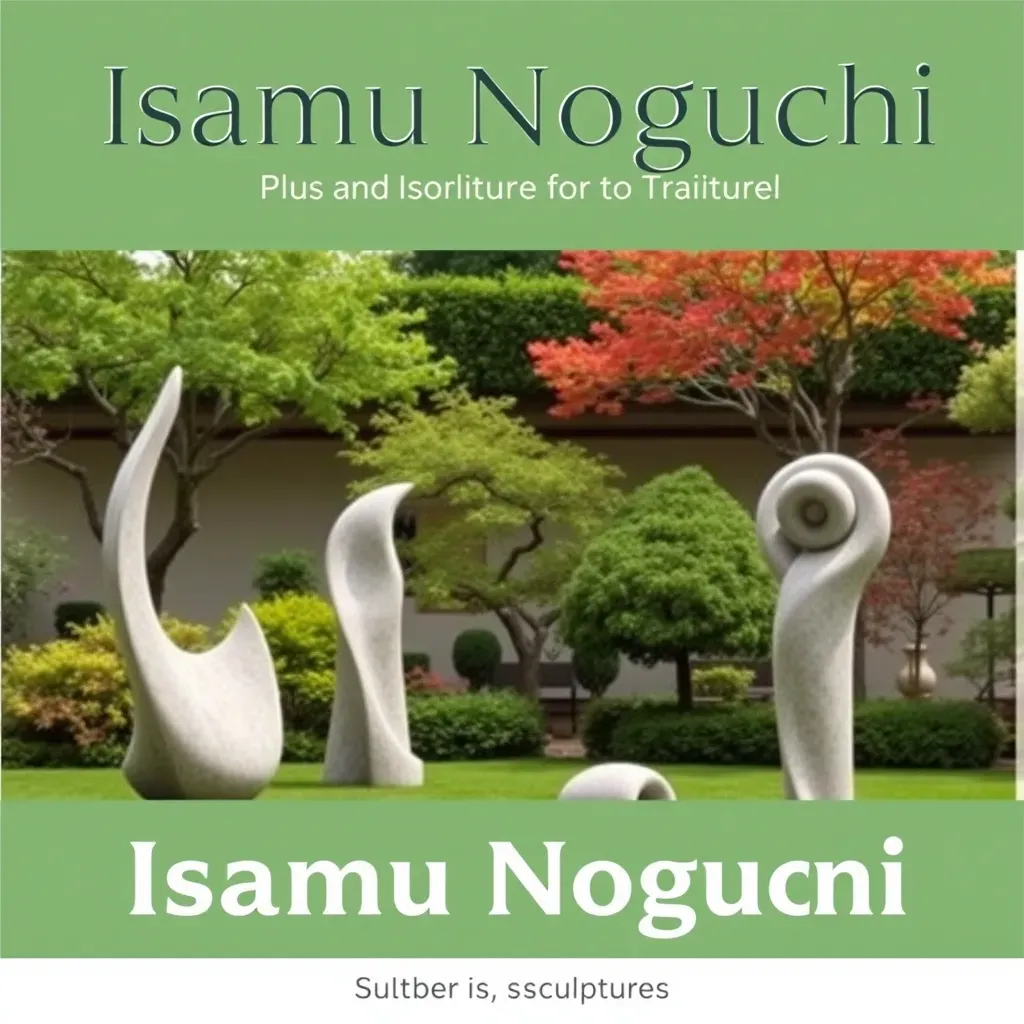Isamu Noguchi
Isamu Noguchi (November 17, 1904 – December 30, 1988) was an influential American sculptor, designer, and landscape architect. His artistic career spanned over six decades, during which he produced a diverse range of works, including sculptures, gardens, furniture, and lighting designs. Throughout his life, Noguchi was recognized for his ability to harmonize traditional and modern aesthetics while exploring the essence of space and form.
Early Life
Noguchi was born in Los Angeles to a Japanese father, Yonejiro Noguchi, a poet, and an American mother, Léonie Gilmour. His parents’ relationship ended when he was very young, and he moved to Japan with his mother at the age of two, where they lived until he was thirteen. The cultural experiences he encountered during these formative years would deeply influence his future work.
Artistic Development
After returning to the United States for high school, Noguchi briefly worked with sculptor Gutzon Borglum, who would later create the Mount Rushmore monument. Although Borglum dismissed Noguchi’s artistic abilities, this experience ignited his passion for sculpture. He subsequently enrolled at Columbia University initially as a pre-med student but soon shifted his focus entirely to art.
Influences and Training
In 1927, Noguchi received a Guggenheim Fellowship, which allowed him to travel to Paris. There, he studied under renowned sculptor Constantin Brancusi and was inspired by the modernist movement. This exposure led him to embrace abstraction and modernism, which became hallmarks of his later work.
Key Works and Collaborations
Noguchi’s career took off with numerous public and private commissions, showcasing his ability to create art that resonated with the public. Among his notable works are:
- Kouros (1944-45): A large-scale sculpture characterized by its fragmented human shape, reflecting both organic and geometric forms.
- The Noguchi Table (1944): An iconic piece of modern furniture that exemplifies his belief in the integration of art and functionality.
- Akari Light Sculptures: A series of lamp designs that combine traditional Japanese craftsmanship with modern aesthetics.
- Black Sun (1969): A monumental sculpture located in Seattle, symbolizing the connection between nature and human creativity.
Sculptural Philosophy
Noguchi believed that sculpture should enhance public spaces and engage individuals. He often merged his Japanese heritage with his American experiences, creating works that reflect a deep understanding of cultural duality. This philosophy was evident in his public projects, such as playgrounds, parks, and gardens, designed to foster community interaction and appreciation for art.
Political Activism and Personal Challenges
The Japanese attack on Pearl Harbor in 1941 significantly impacted Noguchi. Faced with increasing anti-Japanese sentiment, he became an advocate for Japanese Americans and co-founded the Nisei Writers and Artists Mobilization for Democracy. In a bold move, he voluntarily entered a concentration camp in Arizona to support fellow Japanese Americans, showcasing his commitment to social justice.
Later Years and Legacy
In the latter part of his career, Noguchi continued to innovate, often experimenting with new materials and techniques. He spent time in Japan, where he designed gardens that reflect the principles of Zen and nature. In 1985, he established the Noguchi Museum in Long Island City, New York, which houses a comprehensive collection of his works.
Awards and Recognition
Noguchi received numerous accolades throughout his life, including the National Medal of Arts in 1987 and the Kyoto Prize in Arts in 1986. His contributions to art and design have left an enduring legacy, influencing generations of artists and designers worldwide.
Conclusion
Isamu Noguchi’s remarkable journey as an artist and designer exemplifies the fusion of cultural influences and the transformative power of art. His ability to create meaningful spaces and objects continues to inspire and resonate with audiences today.
